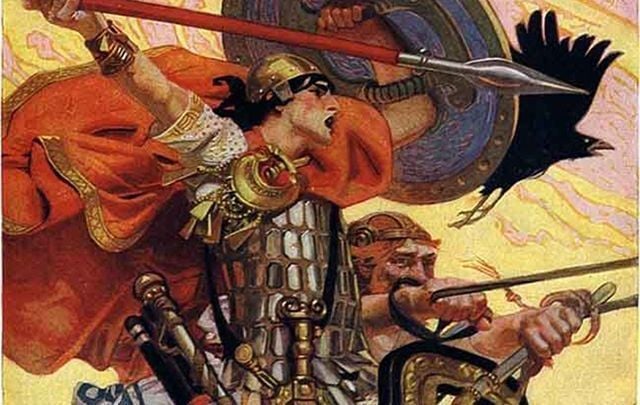Proponents of the theory that the Celts are descended from one of the ten lost tribes of Israel, the tribe of Dan, in historical essays and elsewhere point to various parallels between Irish and ancient Hebrew culture.
For example, they note that the harp, the symbol of Ireland, also plays a role in Jewish history, as the musical instrument of King David.
Some maintain that the tribe of Dan, known for its seafaring, conducted sea voyages to Ireland and colonized it as early as the period of the Judges in the 7th century BC under the name Tuatha Dé Danann.
Scholar Janet Moser writes: "There are certain facts that suggest that the Celts might have derived from a Jewish tradition from the East. The Celtic body of ecclesiastical and civil knowledge was Druidism. Their system can be traced to about 1800 B.C...”
In 'The Psalter of Cashel' an ancient text written by Saint Cormac it states that: 'The Tuatha de Danaan' ruled in Ireland for about two centuries, and were highly skilled in architecture and other arts from their long residence in Greece.'
The Tuatha de Danaan were the descendants of Danaus, the son of Belus, who went with his fifty daughters to Argos, the home of his ancestor Io. In Irish legends the Tuatha de Danaan, who were considered to "be demi-gods, ... were said to have possessed a ... Grail-like vessel ... These teachers of wisdom ... were the founders of the Druidic priesthood."
Were they connected back to the tribes of Israel? As part of the kingdom of Israel, the territory of Dan was conquered by the Assyrians, and the Dan were exiled; the manner of their exile led to their further history being lost.
Soon after the Celtic tribe appeared in Europe leading to speculation that the Celts were the tribe of Dan.
According to the Hebrew Bible, following the completion of the conquest of Canaan by the Israelite tribes after about 1200 BC, Joshua allocated the land among the twelve tribes. Dan was allocated the most northerly region, to the north of the Galilee, and west of the Jordan, stretching north as far as Laish, Dan's main city (which became known as Dan). (Joshua 19:40-48)
In the Biblical census of the Book of Numbers, the tribe of Dan is portrayed as the second largest Israelite tribe (after Judah). Some textual scholars regard the census as being from the Priestly Source, dating it to around the 7th century BC. Following the conquest of the land by Joshua until the formation of the first Kingdom of Israel in 1050 BC, the Tribe of Dan was a part of a loose confederation of Israelite tribes. No central government existed, and in times of crisis, the people were led by ad hoc leaders known as Judges.

Love Irish history? Share your favorite stories with other history buffs in the IrishCentral History Facebook group.
With the growth of the threat from Philistine incursions, the Israelite tribes decided to form a strong centralized monarchy to meet the challenge, and the Tribe of Dan joined the new kingdom with Saul as the first king.
After the death of Saul, all the tribes other than Judah remained loyal to the House of Saul, but after the death of Ish-bosheth, Saul's son and successor to the throne of Israel, the Tribe of Dan joined the other northern Israelite tribes in making David, who was then the king of Judah, king of a reunited Kingdom of Israel. However, on the accession of Rehoboam, David's grandson, in c. 930 BC the northern tribes split from the House of David to reform a Kingdom of Israel as the Northern Kingdom.
The most celebrated Danite was Samson, who some suggest is derived from Danyen tribal legends. The anti-Christ is also said to be a member of the tribe of Dan.
Modern artists use the "scales of justice" to represent the Tribe of Dan due to Genesis 49:16 referencing Dan judging his people. However, more traditional artists use a snake to represent Dan, based on Genesis 49:17.
Their primary trade characteristic was seafaring, unusual for the Israelite tribes. In the Song of Deborah, the tribe is said to have stayed on their ships with their belongings. As part of the Kingdom of Israel, the territory of Dan was conquered by the Assyrians, and the tribe exiled; the manner of their exile led to their further history being lost.
Did they reappear as the Tuatha De Dannan or later the Celts? The truth is lost in the mists of time.




Comments